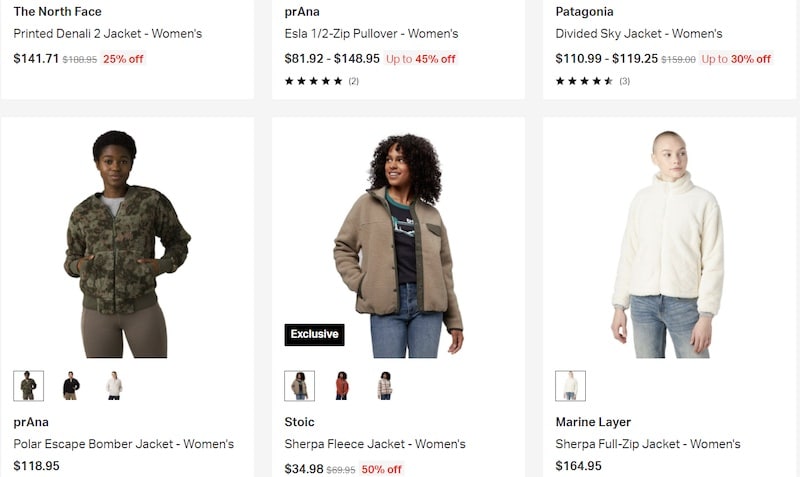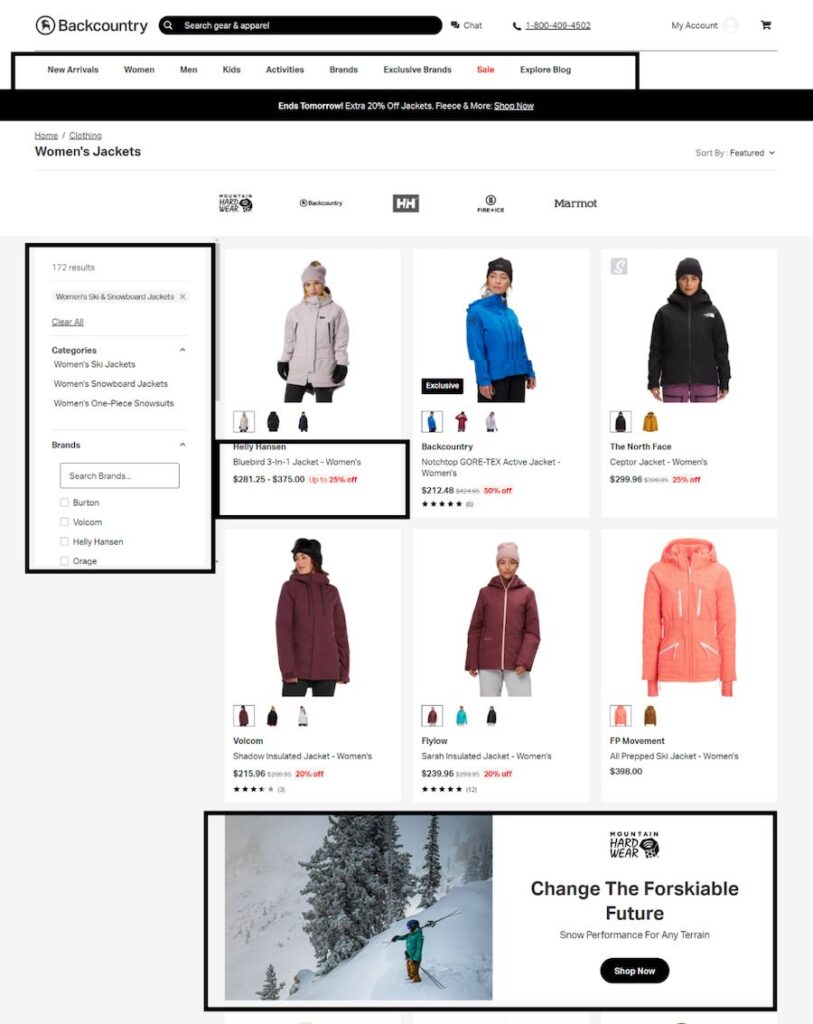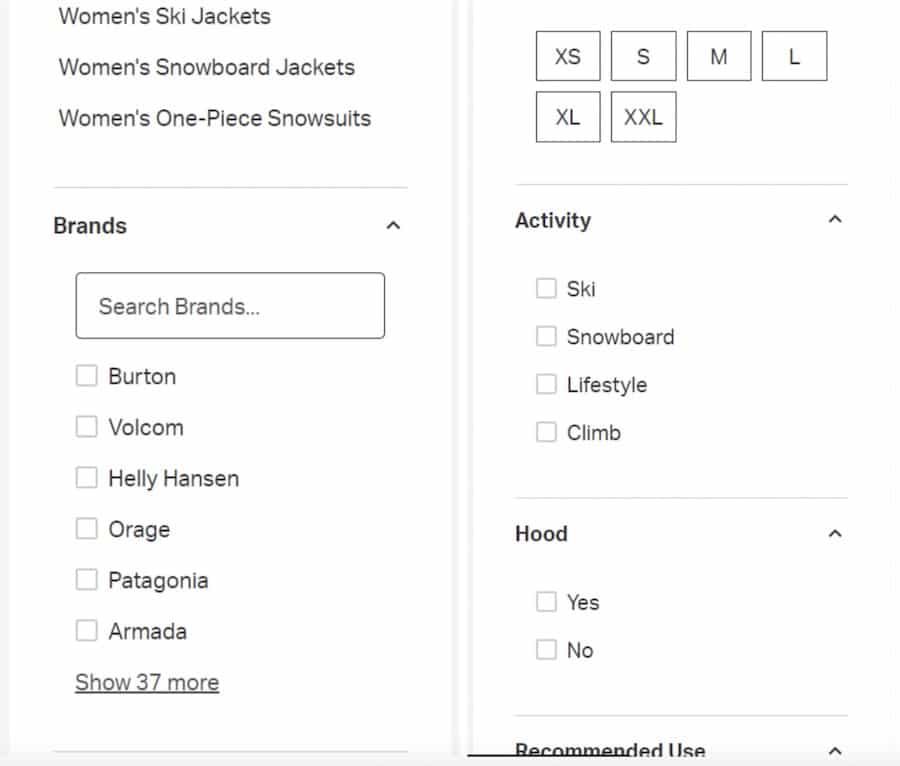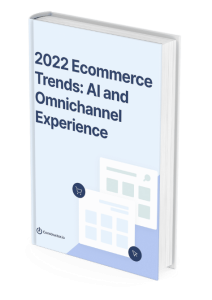Many retailers have been left with the impression that SEO is the best (and only) way to optimize category pages.
They’re static, after all. How much can you optimize a static page?
So your company goes through the basic SEO motions, adding a bit of content with standard industry keywords to each page. Only, it leads to the mistakes above that hold you back from true optimization and acceleration towards your business goals.
Sadly, the lack of true optimization also keeps you stuck in the circus that is manual merchandising. You might recognize it as manually adjusting search results to feature trending products, boosting and burying items on category pages, manually ordering inventory, and so on.
Optimization involves far more than a bit of content and keywords. It involves far more than SEO.
In fact, there’s 10x more traffic with navigation than with search in the apparel industry alone. Great ecommerce category pages capitalize on that and create a more streamlined, personalized browsing experience. But even better, they often combine solid SEO practices with an optimized customer experience to really reap the benefits.
Below, we cover two category page optimization strategies:
- SEO to rank higher in Google search results, bringing the right traffic and visitors to your page in the first place
- On-page navigation and UX optimization to provide your visitors with the best possible experience once they reach your category pages
It’s the combination of both that manifests in true optimization—the kind that brings in revenue and increases conversion rates.
Even on static category pages, SEO best practices are the primary driver in getting your products in front of your target audience organically. Here are some ideas to check off your list.
Typical category page SEO suggestions (and why they aren’t enough)
Optimized content for each category page
Most ecommerce sites include content on their category pages, believing it’ll help them rank. In fact, most SEO agencies and specialists claim that it’s absolutely essential to ranking at all.
Because of this, ecommerce businesses often engage in light (or not so light) keyword stuffing and hide the content with a drop-down tab or place it at the bottom of the page. Not only does this not offer value for on-site visitors, but search engines don’t reward this type of strategy.
In reality, if you’re following best practices, you don’t need that fragment of content on your category pages. Product names and proper linking is generally enough.
For example, Backcountry—an outdoor clothing retailer—doesn’t have blocks of content on any of their category pages. Yet this “women’s jackets” page ranks for 993 keywords and claims 2,430 backlinks:

Approximately 75 of the page’s top-ranking keywords place this category page on the first page of Google for their respective keywords. There are 26 pages within the “women’s jacket” category for a total of 1074 results. To nail SEO within the category, they’ve cleverly added the brand name as well as “Jacket – Women’s” to every single listing:

Including a section at the top or bottom for the purposes of SEO isn’t necessary in this case, because they’re following best practices for product listings and category pages.
Metadata
While search engines crawl your entire website and individual pages, metadata specifically tells them the main topic of the page.
It’s the identifier that customers would also use during their search. Continuing to use Backcountry as an example, we can look at the listing for “women’s ski jackets” on a Google search.
There, we see that “women’s ski jackets” is the title tag in the metadata:

The meta description—the line of text just below the title tag—should contain the same keyword, as should the URL.
This is SEO best practice for all pages of your site, not just category pages.
If yu write metadata well, you’ll also include semantic terms such as “premium outdoor gear” and “clothing” to help push your category page into the search results.
Internal linking
Every page on your site has opportunities for internal linking, whether it’s in the headers, the sidebar, the footer, or the product pages themselves.
Backcountry does something clever with their internal linking, adding a related series page for Mountain Hardwear on their jackets category page. This page features specific Mountain Hardwear products and product spotlights, providing an opportunity to upsell but also to build authority on linked pages:

How to Optimize Ecommerce Category Pages with Personalization
Basic SEO best practices are definite ways to improve your category pages. But SEO simply optimizes for search engines, not customers.
What will truly drive conversions is optimized navigation and more personalization for a better on-site experience. Category pages may be static, but you can still build a level of personalization into your ecommerce store UX.
There are multiple ways to do this, starting with general navigation and building consistency into user searches.
One of the best ways is with dynamic filters.
Optimizing category page navigation with facets and filters
Great category pages allow users to filter by facets, such as color, style, brand, and so on to narrow their browsing experience down to the right product.

Adding facets is tricky at best. Most companies don’t know how to do this accurately; only 40% of online retailers implement facets. Even among some of the most popular ecommerce websites, usability is poor, with only 16% offering a good filtering experience and just half of that qualifying as passable.
But an ecommerce UX platform with machine learning drives results with dynamic filters and facets that are different for each page:
- If your customer searches a category page for boy’s pants, they may filter by inseam or style (bootleg, skinny, ski…)
- On a women’s dresses category page, customers can filter by neckline or silhouette or length.
Machine-learning driven faceting isn’t just about the standard ability to narrow down a search but altering what that filtering means for each page and each customer. Especially on category pages when users are browsing rather than searching specifically for items, filtering allows them to find what they’re looking for faster.
Using AI for dynamic and personalized experiences
While category pages have traditionally been static (meaning the same for every person visiting the page), artificial intelligence is changing the game. AI makes it possible to personalize even “static” browse pages by utilizing clickstream data.
Clickstream data shows what your users click on, purchase, and completely ignore, then ranks those products in your collections automatically according to that data.
Letting AI handle much of the previously manual ecommerce merchandising work frees up teams to dig in more creatively on the look and feel of the site. You’ll now be able to spot trends in purchasing, giving you insights that help you further optimize the buyer experience. It’ll also boost trending sale items, or bury out-of-stock products.
Essentially, your static pages are no longer static, changing with your inventory and customer demands and interests.
Apply learnings across the shopping experience
Modern merchandising, when done correctly, is holistic. What an individual user searches for, clicks on, and eventually converts on should alter what products they should see first when they browse on category pages.
When your ecommerce store operates as an integrated system—and search, browse, and autosuggest intertwine—each user’s activity accounts for a data point that influences the rest of their time shopping with you.
As a merchandiser, you should be able to have visibility into those data points all in one platform and understand why the AI shapes your site as it does. The insights that the AI surfaces allows you to make strategic and proactive decisions that impact your bottom line.
Ready to see how AI is changing the game for omnichannel ecommerce?
2022 Ecommerce Trends: AI and Omnichannel Experience

In this 38-page PDF, learn how forward-thinking ecommerce retailers are gaining advantage and driving revenue in 2022 by applying three main strategies:
- Hyper-personalization
- First-party clickstream data
- Omnichannel product discovery and customer experience

